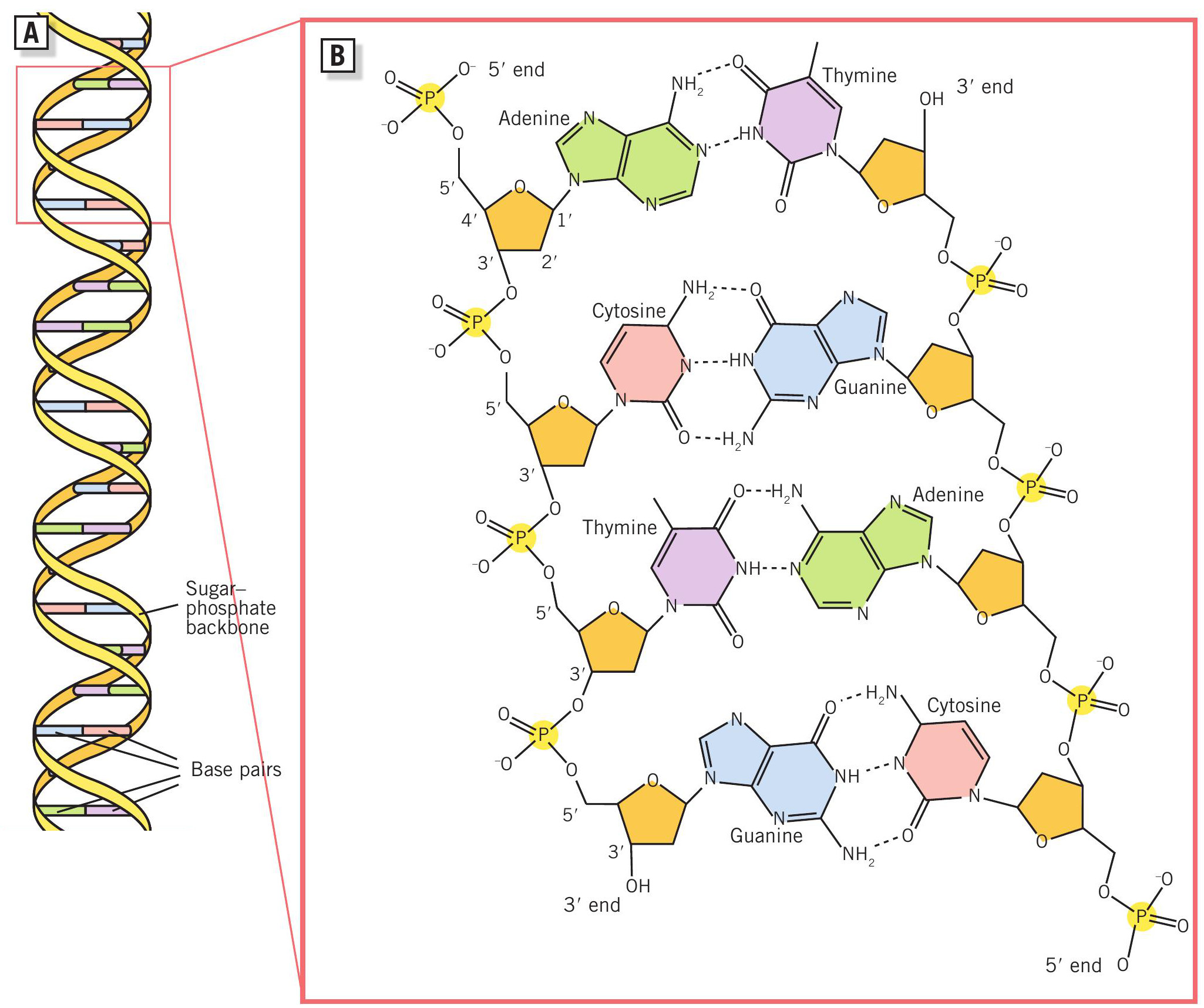
Figure 1 (A) The double helix structure of DNA; (B) the chemical structure of DNA. Phosphate groups are shown in yellow; sugar groups are shown in orange with the carbon atoms numbered 1′ to 5′. Base groups are adenine (green), thymine (purple), guanine (blue) and cytosine (pink).
We all start life as single fertilised egg cells, which contain a single nucleus. The nucleus houses all our genetic information, some 3.2 × 109 base pairs of DNA, packaged into 46 chromosomes. This cell then divides, giving rise to two new daughter cells. Many divisions later the average human contains between 75 and 100 trillion (7.5 × 1013) cells, each containing a perfect copy of DNA. But how is DNA so faithfully replicated? The answer lies with an enzyme called DNA polymerase, which builds up our DNA one nucleotide at a time. Its accuracy during replication is essential to maintain the integrity of our DNA. In order to understand how this enzyme works, we need to consider the structure of DNA.
DNA polymerase
Your organisation does not have access to this article.
Sign up today to give your students the edge they need to achieve their best grades with subject expertise
Subscribe




